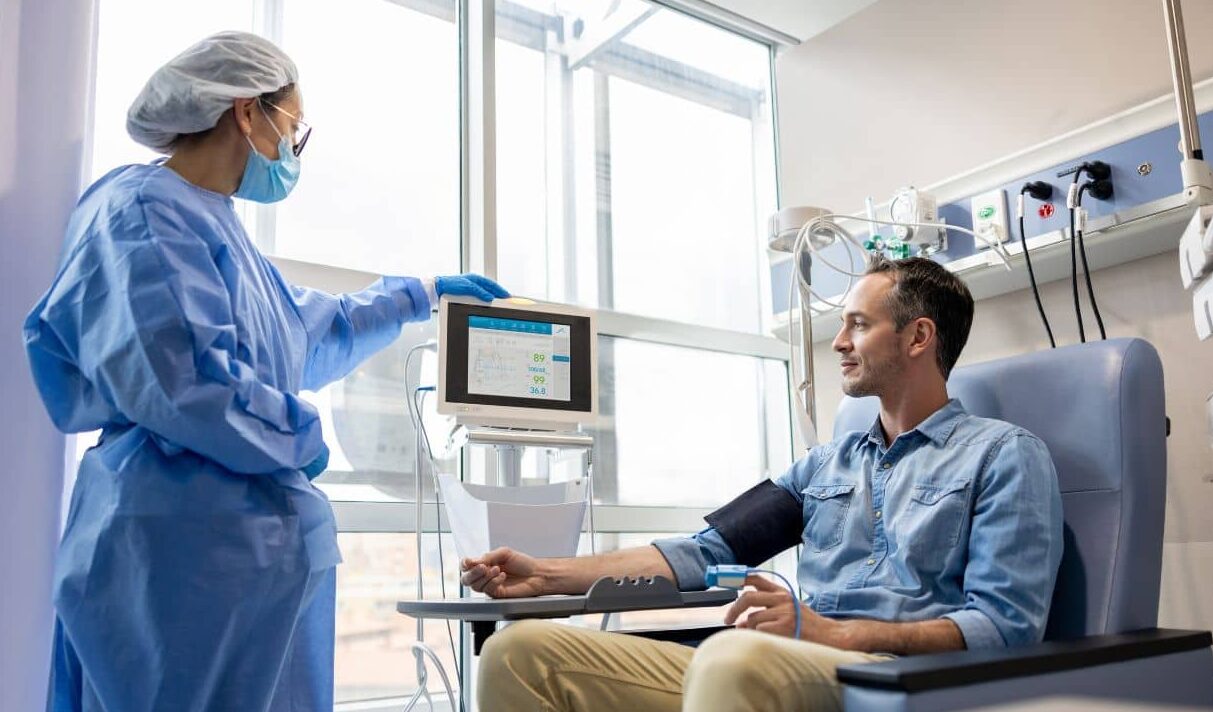-
 News
When glucose levels are low, chemotherapy ceases to affect cancer cells
News
When glucose levels are low, chemotherapy ceases to affect cancer cells
-
 News
Excessive treatment of prostate cancer in older men may reduce quality of life without increasing its duration
News
Excessive treatment of prostate cancer in older men may reduce quality of life without increasing its duration
-
 News
Brain cancer can be cured by viruses
News
Brain cancer can be cured by viruses
-
 News
Ways to reduce lymphatic pain in breast cancer have been found
News
Ways to reduce lymphatic pain in breast cancer have been found
-
 News
Scientists have turned bacteria into a powerful weapon against cancer
News
Scientists have turned bacteria into a powerful weapon against cancer
All news
Clinics for the treatment of obstetric and gynecological
Obstetrics and gynecology — branches of medicine that combine many areas that accompany women at different periods of life.
These areas are: gynecology and obstetrics, surgery, endocrinology, etc.
- Obstetrics provides care before, during and after childbirth;
- Gynecology specializes in the diagnosis, treatment and prevention of female diseases.
A specialist in obstetrics and gynecology has the skills and knowledge to tackle women’s health issues at all stages of a woman’s life.
MedTour patients recommend clinics for the treatment of obstetric and gynecological:
Doctors for the treatment of obstetrics and gynecology
Patient reviews
I had in vitro fertilization in this center. They did it well. I am really happy to be able to have a kid now! Thanks to MedTour for organizing the whole treatment! It was even not that expensive as I thought.
Frequently Asked Questions
Gynecology is involved in the health and well-being of women outside of pregnancy, and obstetrics during pregnancy and childbirth.
A gynecologist specializes in contraception, fertility, menstruation, pregnancy, menopause and various diseases of the female system.
The work of an obstetrician-gynecologist is aimed at the period of pregnancy, childbirth and postpartum period. With a normal course or with pathologies and diseases.
All obstetricians are gynecologists, but not all gynecologists are obstetricians.
Gynecological diseases affect the female genital and organs:
- Anomalies of the pelvic organs;
- Hormonal disorders: polycystic ovary, uterine myoma;
- PMS, manifestations of menopause;
- Inflammatory processes: endometritis, vaginitis, salpingitis, oophoritis, etc.;
- Benign neoplasms: uterine fibroids;
- Malignant tumors.
An obstetrician-gynecologist provides assistance in the following physiological and pathological conditions:
- Gynecological diseases;
- Infertility;
- Preparing for pregnancy;
- Pregnancy and childbirth;
- Complications of pregnancy;
- Postpartum trauma;
- Miscarriage, abortion;
- Infectious diseases of the pelvic organs.
Mandatory consultation with a gynecologist or obstetrician-gynecologist is necessary in following cases:
- Annual preventive examination;
- At puberty;
- Before the onset of sexual activity;
- When planning a pregnancy;
- If a woman has gynecological complaints.
Many illnesses early in their development don’t cause manifestations. Regular medical examinations should be attended for the early finding of gynecological diseases, precancerous and cancerous illness of the female genital organs.
In addition, you can get information about contraception, pregnancy and STDs.
Modern methods of diagnosis and treatment in obstetrics and gynecology
Diagnostic procedures in obstetrics and gynecology:
- Gynecological examination:
The physician examines the external and external genital organs. Using a gynecological speculum, the doctor gains access to the fornix of the vagina and cervix.
- Colposcopy:
Inspection of the vagina and cervix with a colposcope. A colposcope — a microscope equipped with a light source.
The physician wets the surface of the cervix with two solutions. This makes the pathological changes more noticeable. During a colposcopy, the doctor may take a swab and perform a biopsy.
- Pap test (Pap smear) — early diagnosis of cervical cancer.
The Pap test is performed at every visit to the gynecologist, lasts a few minutes and painless.
The doctor uses a small brush to scrape off the cells from the cervical canal. They are then examined under a microscope. The Pap smear does not pose any risk or side effects to patients.
- Biopsy:
The doctor will take tissue samples for examination. The samples will be examined under a microscope to detect or rule out precancerous or cancerous changes in the cells.
- Ultrasound of the pelvic organs and mammary glands:
With the help of an ultrasound, the physician examines the internal genital organs and, if necessary, the mammary glands for pathological changes.
- Hysteroscopy:
The doctor examines the uterus with a hysteroscope, which is inserted through the cervix. The method is low-traumatic and allows not only diagnostics, but also surgical intervention.
As part of obstetrics, pregnancy tests, preventive checkups and prenatal diagnostics are carried out.
Prenatal diagnostics — examinations of pregnant women to identify certain diseases in the fetus.
Prenatal diagnostic methods:
- Ultrasound: compulsory three ultrasounds at 11-13, 18-21 and 30-34 weeks. If desired or if necessary, diagnostics are carried out more often;
- Doppler sonography: assessment of blood flow in the vessels of the mother and child;
- Combined test: assessment of the risks of malformations (Down syndrome, Turner, Patau, heart, skeletal, kidney, etc.);
- Cardiotocography: simultaneous registration of uterine tone and fetal heartbeat;
- Amniocentesis: analysis of amniotic fluid;
- Placental puncture: collection of cells from the placenta;
- Puncture of the umbilical cord: the umbilical cord vessel is punctured to take blood from the child.
Tactics for the treatment of gynecological and obstetric diseases:
The choice of the method of therapy depends on many factors, ranging from the state of health of the woman, the existing disease and to the desire to have children.
Treatment options:
- Conservative (medication);
- Surgical;
- Chemo and radiation therapy.
The most common surgical interventions in gynecology: removal of the uterus (hysterectomy), fibroids (myomectomy) and ovarian cysts. The most common operation in obstetrics is a cesarean section.
Published:
Updated:










Добрый день! Хочу оставить отзыв благодарности .
Дайнис Леонидович, я от чистого сердца благодарю Вас, за такую непростую в моем случае операцию, и то, как легко и быстро все прошло! Сегодня второй день после операции и я чувствую себя хорошо не только физически, но и психологически! Все прошло на столько комфортно, что я практически не переживала. В целом людям свойственно волноваться перед операцией, но с Вашей командой, анестезиологов, мед персонала я чувствовала что все под чутким контролем!! Я желаю всем здоровья!